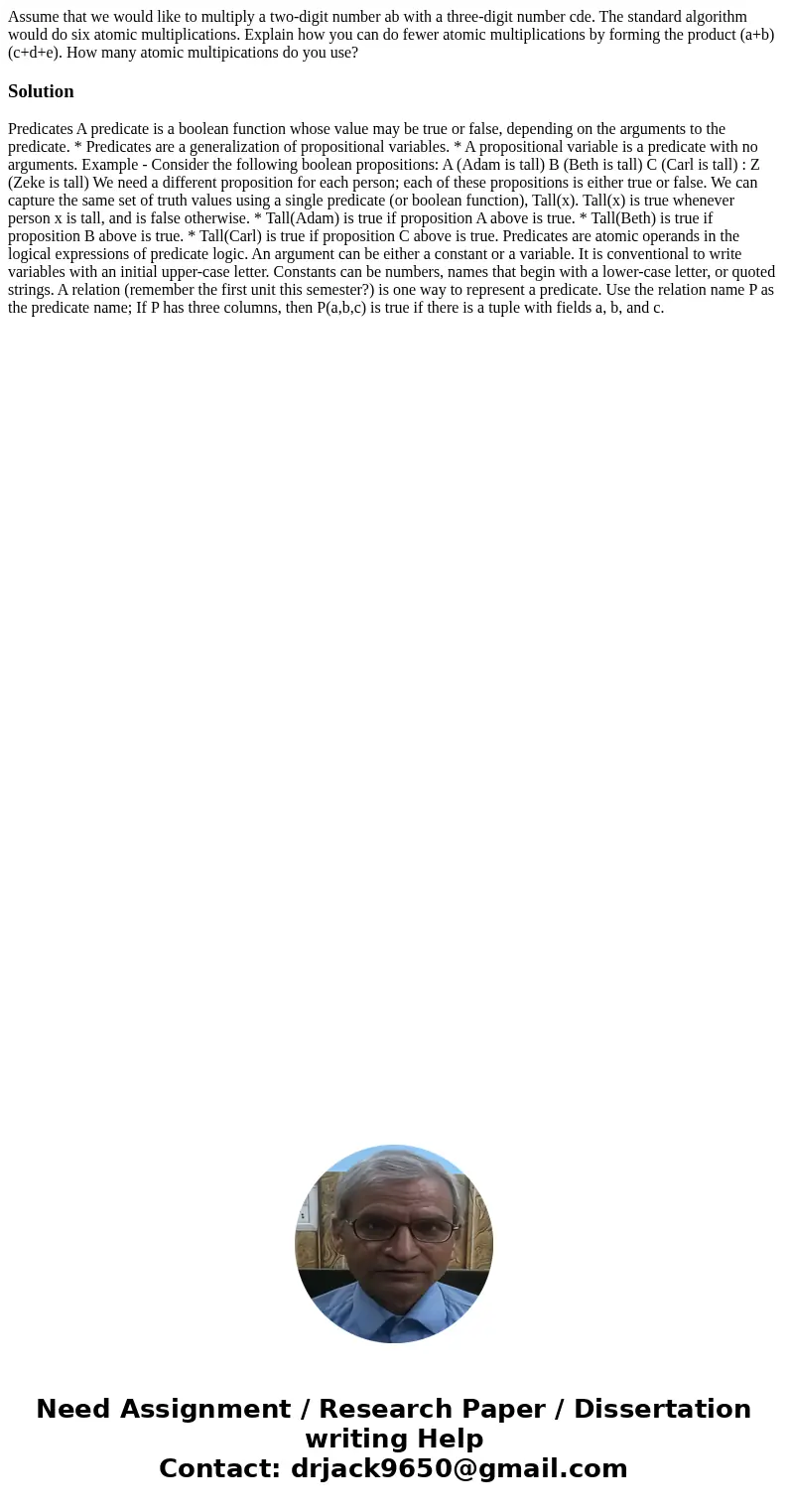Assume that we would like to multiply a twodigit number ab w
Assume that we would like to multiply a two-digit number ab with a three-digit number cde. The standard algorithm would do six atomic multiplications. Explain how you can do fewer atomic multiplications by forming the product (a+b)(c+d+e). How many atomic multipications do you use?
Solution
Predicates A predicate is a boolean function whose value may be true or false, depending on the arguments to the predicate. * Predicates are a generalization of propositional variables. * A propositional variable is a predicate with no arguments. Example - Consider the following boolean propositions: A (Adam is tall) B (Beth is tall) C (Carl is tall) : Z (Zeke is tall) We need a different proposition for each person; each of these propositions is either true or false. We can capture the same set of truth values using a single predicate (or boolean function), Tall(x). Tall(x) is true whenever person x is tall, and is false otherwise. * Tall(Adam) is true if proposition A above is true. * Tall(Beth) is true if proposition B above is true. * Tall(Carl) is true if proposition C above is true. Predicates are atomic operands in the logical expressions of predicate logic. An argument can be either a constant or a variable. It is conventional to write variables with an initial upper-case letter. Constants can be numbers, names that begin with a lower-case letter, or quoted strings. A relation (remember the first unit this semester?) is one way to represent a predicate. Use the relation name P as the predicate name; If P has three columns, then P(a,b,c) is true if there is a tuple with fields a, b, and c.
 Homework Sourse
Homework Sourse